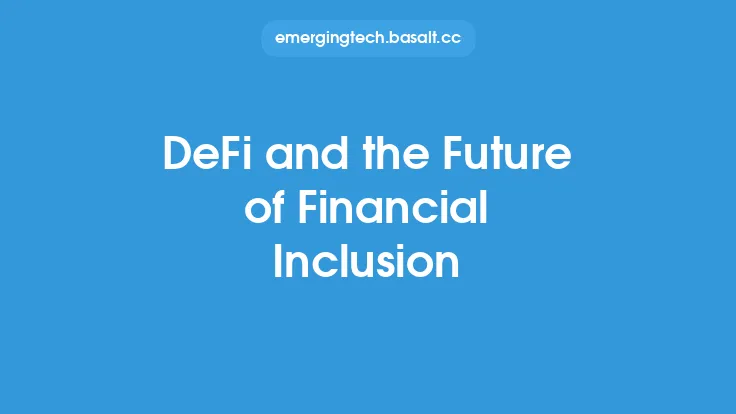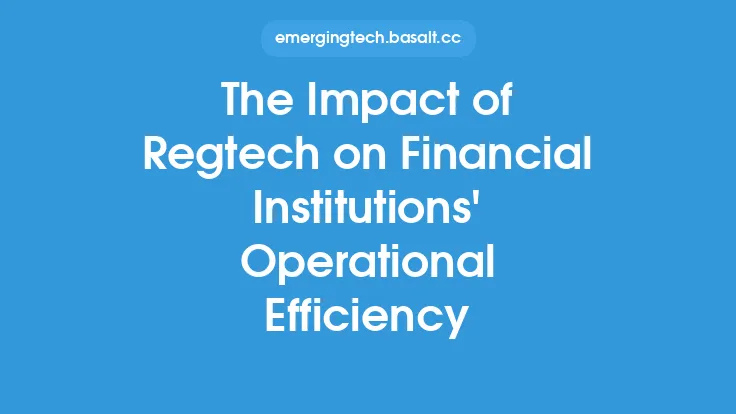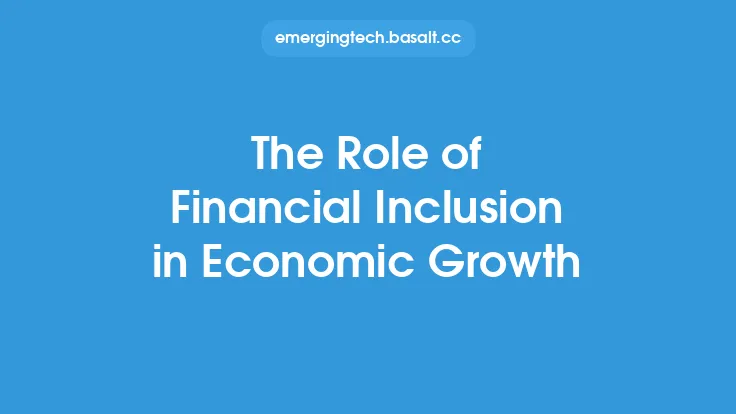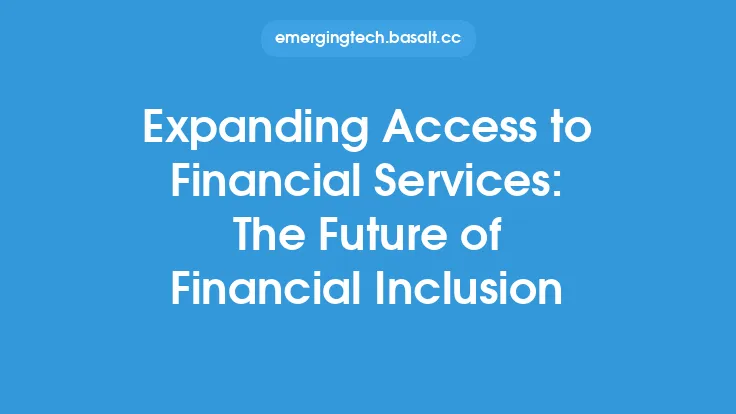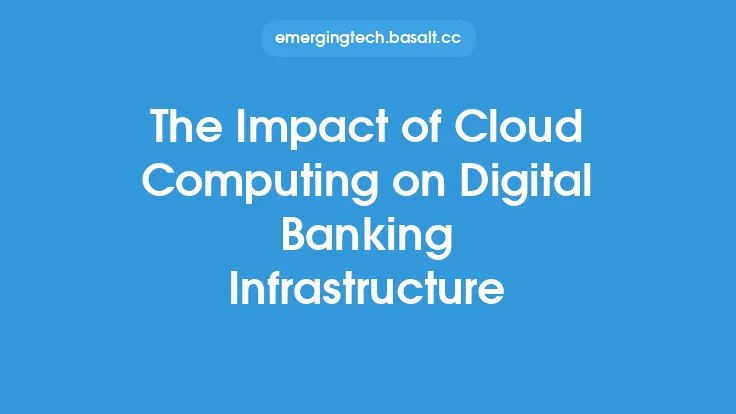Financial inclusion is a crucial aspect of economic development, as it enables individuals and businesses to access financial services, manage their finances effectively, and improve their overall well-being. One of the most significant benefits of financial inclusion is its impact on poverty reduction. By providing access to financial services, financial inclusion can help reduce poverty by increasing economic opportunities, improving financial stability, and enhancing economic mobility.
Introduction to Financial Inclusion and Poverty Reduction
Financial inclusion refers to the availability and accessibility of financial services, such as banking, credit, and insurance, to all segments of society, particularly the underserved and marginalized populations. Poverty reduction, on the other hand, is a complex and multifaceted issue that requires a comprehensive approach. Financial inclusion can play a critical role in poverty reduction by providing individuals and businesses with the financial tools and resources they need to manage their finances, invest in their future, and improve their economic well-being.
The Link Between Financial Inclusion and Poverty Reduction
The link between financial inclusion and poverty reduction is well-established. Studies have shown that financial inclusion can have a significant impact on poverty reduction by increasing access to financial services, improving financial stability, and enhancing economic mobility. For example, a study by the World Bank found that a 10% increase in financial inclusion can lead to a 2.2% reduction in poverty. Another study by the International Monetary Fund (IMF) found that financial inclusion can reduce poverty by increasing access to credit, improving financial stability, and enhancing economic mobility.
Mechanisms of Financial Inclusion in Poverty Reduction
There are several mechanisms through which financial inclusion can contribute to poverty reduction. These include:
- Increasing access to financial services: Financial inclusion can provide individuals and businesses with access to financial services, such as banking, credit, and insurance, which can help them manage their finances, invest in their future, and improve their economic well-being.
- Improving financial stability: Financial inclusion can help individuals and businesses improve their financial stability by providing them with access to savings, credit, and other financial products that can help them manage risk and smooth out income fluctuations.
- Enhancing economic mobility: Financial inclusion can enhance economic mobility by providing individuals and businesses with access to financial services that can help them invest in their future, such as education and training, and improve their economic well-being.
- Increasing economic opportunities: Financial inclusion can increase economic opportunities by providing individuals and businesses with access to financial services that can help them start and grow businesses, invest in their communities, and improve their economic well-being.
Role of Technology in Financial Inclusion and Poverty Reduction
Technology has played a critical role in advancing financial inclusion and poverty reduction. Digital financial services, such as mobile banking and digital payments, have expanded access to financial services, particularly in underserved and marginalized communities. For example, mobile banking has enabled individuals to access financial services remotely, reducing the need for physical bank branches and increasing access to financial services. Digital payments have also enabled individuals to make payments and transfer funds electronically, reducing the need for cash and increasing financial inclusion.
Challenges and Limitations of Financial Inclusion in Poverty Reduction
Despite the potential of financial inclusion to reduce poverty, there are several challenges and limitations that must be addressed. These include:
- Limited access to financial infrastructure: In many developing countries, access to financial infrastructure, such as bank branches and ATMs, is limited, making it difficult for individuals and businesses to access financial services.
- Lack of financial literacy: Many individuals and businesses lack the financial literacy and skills needed to effectively use financial services, which can limit the impact of financial inclusion on poverty reduction.
- High transaction costs: Transaction costs, such as fees and charges, can be high, making it difficult for individuals and businesses to access financial services.
- Regulatory barriers: Regulatory barriers, such as strict know-your-customer (KYC) requirements, can limit access to financial services, particularly for underserved and marginalized populations.
Conclusion and Recommendations
In conclusion, financial inclusion has the potential to play a critical role in poverty reduction by increasing access to financial services, improving financial stability, and enhancing economic mobility. However, there are several challenges and limitations that must be addressed, including limited access to financial infrastructure, lack of financial literacy, high transaction costs, and regulatory barriers. To address these challenges and limitations, policymakers, financial institutions, and other stakeholders must work together to develop and implement policies and programs that promote financial inclusion and poverty reduction. These may include:
- Investing in financial infrastructure, such as bank branches and ATMs, to increase access to financial services.
- Providing financial literacy training and education to individuals and businesses to improve their financial skills and knowledge.
- Reducing transaction costs, such as fees and charges, to make financial services more affordable and accessible.
- Relaxing regulatory barriers, such as strict KYC requirements, to increase access to financial services, particularly for underserved and marginalized populations.
- Developing and implementing policies and programs that promote financial inclusion and poverty reduction, such as microfinance programs and financial inclusion initiatives.
